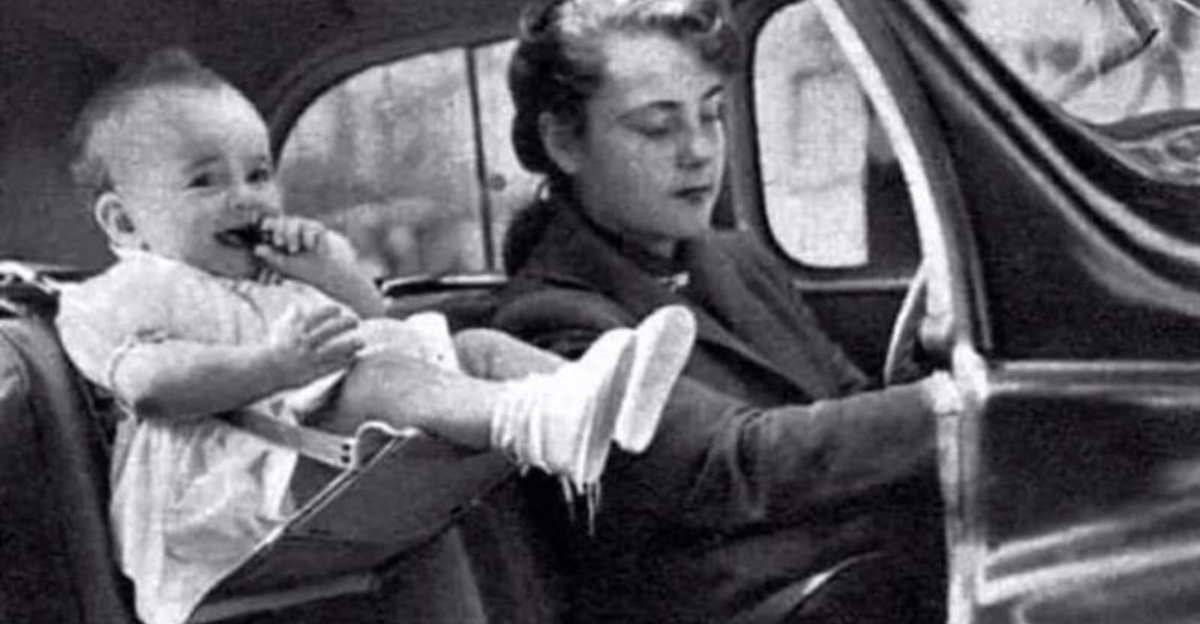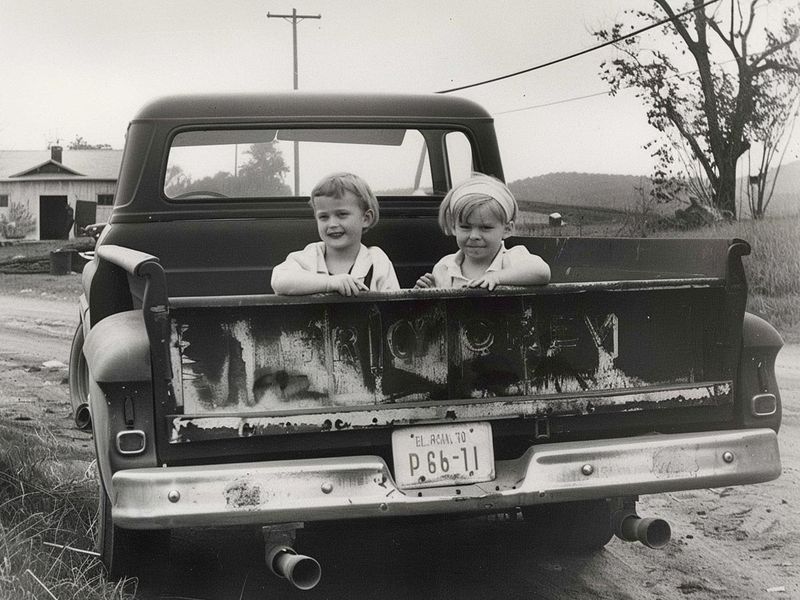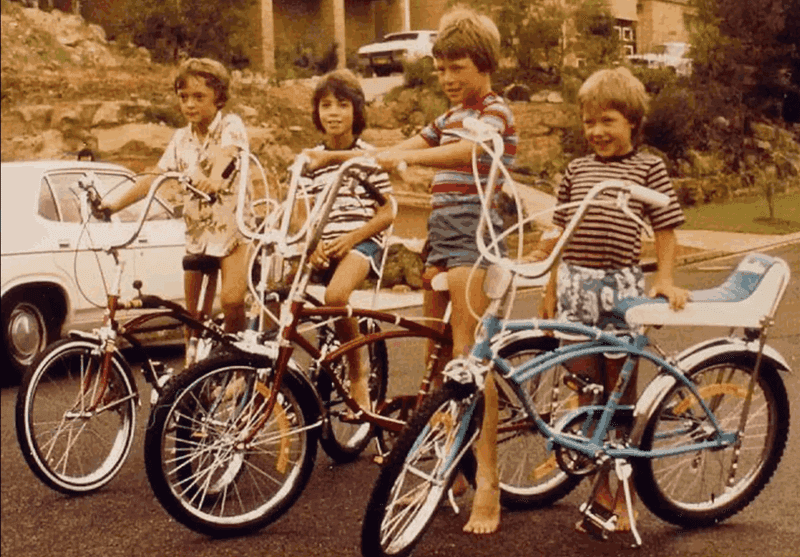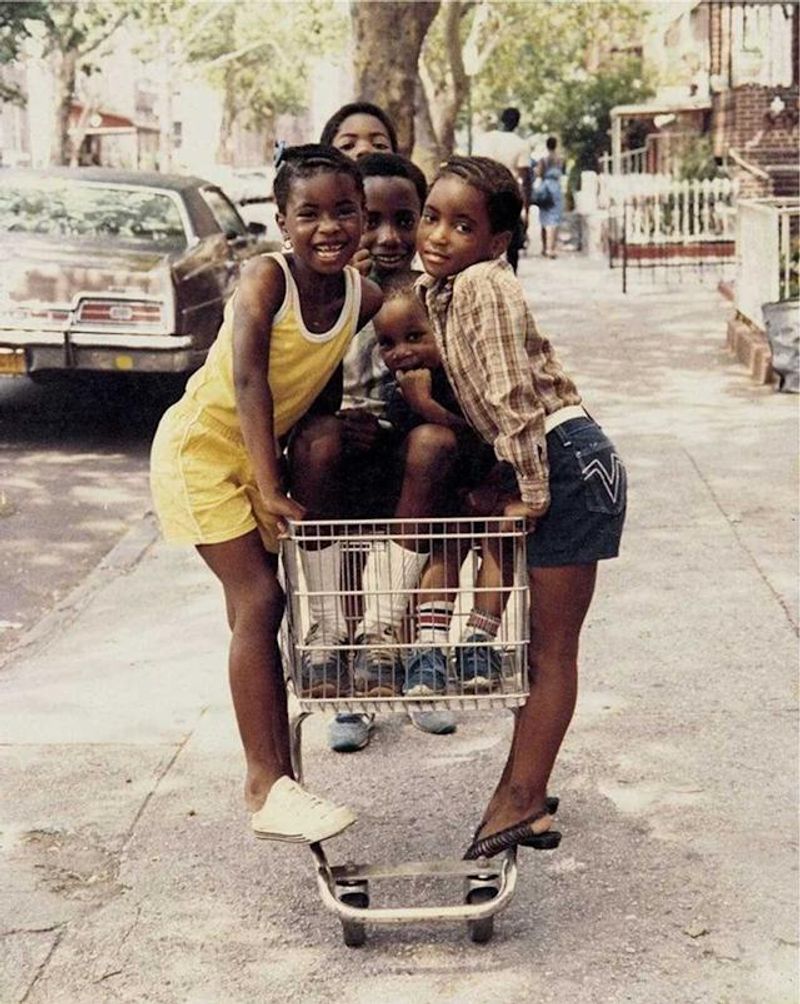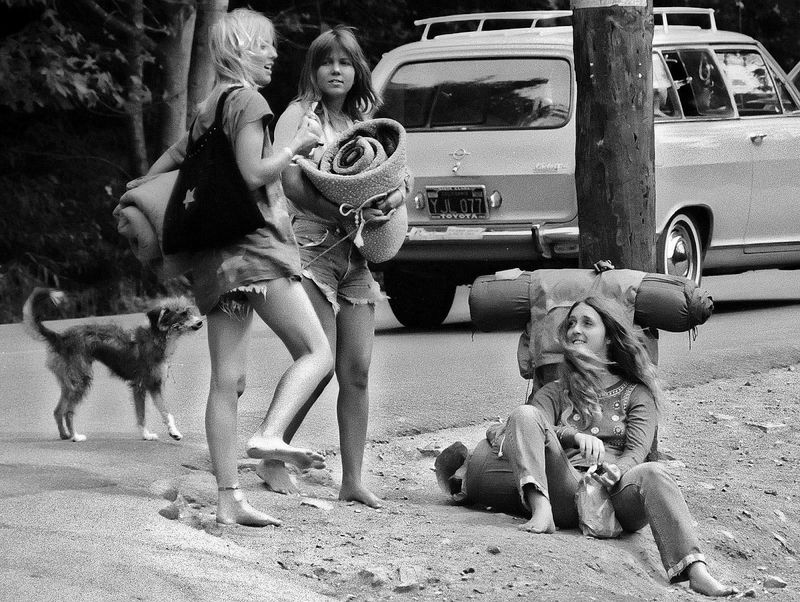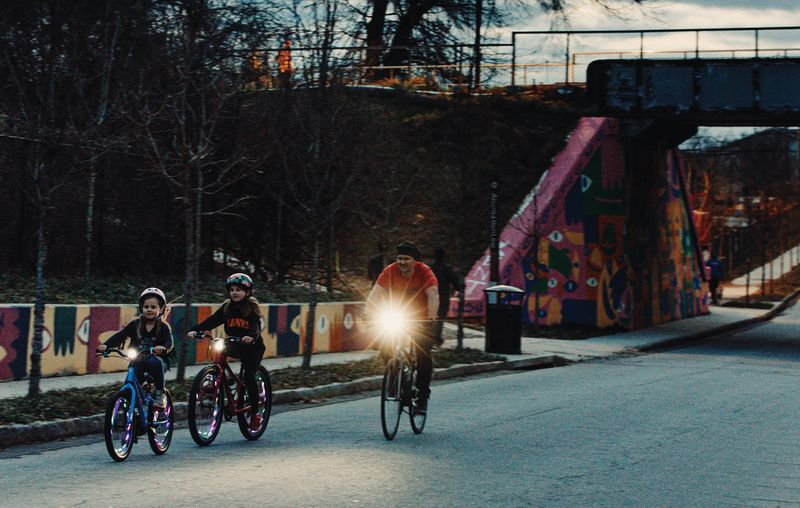Remember the days when kids roamed freely through neighborhoods until sunset? The 1960s were a golden era of childhood independence that today’s parents can hardly imagine. Many common activities from that decade would now result in worried looks, police calls, or even legal consequences. Take a nostalgic trip back to the free-wheeling sixties and discover how childhood has changed through these once-normal activities that are now restricted or illegal.
1. Riding in the Back of Pickup Trucks
Wind whipping through your hair, bumping along country roads with friends—pickup truck rides were a childhood highlight in the 60s. Kids would pile into truck beds without a second thought, sometimes standing to catch the breeze or sitting with legs dangling off the tailgate. Today, this freedom has disappeared in many states. California, New York, and Florida are among states that have banned passengers from riding in cargo areas, especially children. Exceptions exist for parades, farm work, and emergencies. Safety concerns drove these changes after accident statistics revealed the dangers. Modern parents would likely be shocked at the casual way children once traveled, exposed to the elements with nothing but the truck bed floor beneath them.
2. Walking or Biking Without Helmets
Neighborhood kids zipped around on bikes with reckless abandon, hair flowing freely in the wind. Not a helmet in sight during the entire decade! Skinned knees and occasional tumbles were considered normal parts of growing up, not reasons for safety legislation. Fast forward to today, and the scene looks dramatically different. Most states now require children under 18 to wear helmets when riding bicycles. Some locations extend these requirements to skateboards, scooters, and roller skates. Research showing traumatic brain injuries could be reduced by up to 85% with proper helmet use eventually convinced lawmakers to act. Parents can face fines if their children repeatedly ride without protective headgear in many jurisdictions.
3. Playing Outside Unsupervised
“Be home when the streetlights come on!” This classic parental instruction gave 1960s kids hours of unsupervised freedom. Seven-year-olds wandered neighborhoods, built forts in vacant lots, and explored woods without adult oversight. Parents neither worried nor faced legal consequences. Modern children experience a drastically different childhood. Several states have enacted laws specifying minimum ages for leaving children unsupervised. In Illinois, children under 14 left alone can be considered neglected under certain circumstances. Factors like media coverage of child abductions, changing social norms, and heightened parental anxiety have transformed childhood independence into potential legal liability. The spontaneous neighborhood games and adventures that defined the 60s have largely disappeared.
4. Hitchhiking to Town
Thumbs extended toward the road, teenagers in the 60s thought nothing of catching rides with strangers to reach the movie theater or local hangout spots. Hitchhiking represented freedom and adventure—a practical solution when family cars weren’t available and public transportation was limited. The roadside thumb has since disappeared from American culture. Many states have enacted laws prohibiting pedestrians from soliciting rides, especially on highways or interstate entrances. Even where technically legal, the practice has become socially unacceptable. High-profile crimes involving hitchhikers in the 1970s transformed public perception. Parents who once hitchhiked themselves now warn children never to accept rides from strangers. What was once a common transportation method has become a symbol of unnecessary risk.
5. Setting Off Cherry Bombs and M-80s
Fourth of July celebrations in the 60s often featured powerful fireworks that would make modern parents gasp. Cherry bombs, M-80s, and silver salutes packed serious explosive power—roughly equivalent to quarter-sticks of dynamite! Kids purchased them freely at roadside stands. The Consumer Product Safety Commission banned these high-powered explosives for consumer use in 1966, though enforcement took years to become effective. Today, possession of these items without proper licensing is a federal offense carrying potential prison time. Modern fireworks regulations specify maximum powder content and fuse burn rates. The cherry bomb’s distinctive red sphere and the cardboard tube of the M-80 have been relegated to nostalgic memories, replaced by safer—though decidedly less exciting—consumer alternatives.
6. Buying Cigarettes for Parents
Corner store owners barely raised an eyebrow when kids arrived with notes from parents: “Please sell Johnny a pack of Marlboros.” Children regularly purchased tobacco products for family members, sometimes even picking up cigarettes for themselves. No ID checks, no questions asked. The landscape has changed dramatically. Federal law now prohibits selling tobacco to anyone under 21, a significant shift from the 18-year minimum that existed for decades. Self-service displays have disappeared, and strict ID verification is standard practice. Sending a child to purchase cigarettes today could result in trouble for both the parent and the retailer. The casual attitude toward youth tobacco access that defined the 60s has been replaced by stringent regulations designed to prevent early addiction.
7. Driving Without Seatbelts
Station wagons packed with unrestrained children bounced along highways in the 1960s. Kids sprawled across back seats, perched on parents’ laps in the front, or created makeshift playrooms in cargo areas. Seatbelts, if the car even had them, remained firmly tucked between cushions. Beginning in the 1980s, states started implementing mandatory seatbelt laws. Today, every state except New Hampshire requires adult drivers and passengers to buckle up, with even stricter rules for children. Child safety seat laws have become increasingly specific, with requirements based on age, weight, and height. The freedom to move around inside a moving vehicle—once a hallmark of family road trips—has been sacrificed in favor of dramatically improved survival rates during accidents.
8. Carrying Pocket Knives to School
Boy Scout pocket knives jingled alongside lunch money in the pockets of countless schoolchildren during the 60s. These tools represented responsibility and practical skills—opening packages, sharpening pencils, or whittling during recess. Teachers rarely commented on their presence. Zero-tolerance weapons policies have transformed these once-common tools into grounds for suspension or expulsion. Even small Swiss Army knives or multi-tools with blade components are prohibited on school grounds in most districts. High-profile school violence incidents prompted sweeping policy changes nationwide. The pocket knife, once a symbol of practical childhood independence, now represents a serious disciplinary breach. Parents who fondly remember carrying their own knives to school must now explain to confused children why the rules have changed so dramatically.
9. Skipping School Without Consequences
Playing hooky carried minimal consequences in the 60s beyond a stern lecture if caught. Attendance records weren’t digitized, and parents often learned about absences weeks later through report cards. Some adventurous kids perfected parent signature forgeries for absence notes. Modern truancy laws have sharp teeth. Parents face fines, mandatory parenting classes, and even potential jail time in severe cases. Automated systems notify parents of absences immediately via text or email. Schools employ dedicated attendance officers who work with law enforcement to track chronically absent students. The casual attitude toward occasional missed school days has transformed into a strict legal framework. What was once considered a minor childhood rebellion is now treated as a serious educational and developmental concern requiring intervention.
10. Riding Bikes After Dark Without Lights
Summer evenings in the 60s found neighborhood streets filled with children pedaling furiously in the gathering darkness. Few bikes featured lights or reflectors—these accessories were considered optional upgrades rather than essential safety equipment. Today’s cycling laws mandate proper illumination after sunset. Most states require white front lights visible from at least 500 feet and red rear reflectors or lights. Violators can receive tickets similar to those issued for automotive equipment violations. The push for bicycle lighting requirements gained momentum as traffic increased and accident statistics highlighted visibility issues. Modern parents outfit bikes with multiple lights, reflective tape, and high-visibility clothing—equipment that would have seemed absurdly cautious to families in the 1960s when children regularly disappeared into the dusk on unlit bicycles.
11. Playing with Realistic Toy Guns
Cap guns, realistic western six-shooters, and military-style toy rifles were staples of 1960s playtime. Children engaged in elaborate neighborhood “war games” with replica weapons indistinguishable from real firearms at a distance. Nobody thought twice about kids pointing these toys at each other or carrying them in public. Federal law now requires bright orange tips on toy guns. Many municipalities have enacted even stricter regulations prohibiting realistic replicas entirely. Tragic incidents involving police officers mistaking toy weapons for real firearms prompted these changes. The cowboy-and-Indian games that dominated 1960s backyards have largely disappeared, replaced by video games where virtual weapons don’t trigger public alarm. Parents now carefully consider the appearance of toy weapons, weighing fun against potential misunderstandings.
12. Setting Up Lemonade Stands Without Permits
Entrepreneurial spirits bloomed at curbside lemonade stands where neighborhood kids earned pocket money on hot summer days. No health permits, business licenses, or parental supervision required—just a pitcher, cups, and a hand-lettered sign advertising prices. Today’s young entrepreneurs face a complex regulatory landscape. Many jurisdictions require food service permits, business licenses, and compliance with health department regulations—even for children’s temporary stands. Several high-profile shutdowns of children’s lemonade operations have sparked backlash, prompting some states to pass “lemonade stand laws” specifically exempting kids from certain requirements. Still, in many areas, the spontaneous lemonade stand remains technically illegal without proper paperwork—a far cry from the carefree commerce of the 1960s.
13. Lighting Campfires Anywhere
Childhood adventures in the 60s often culminated around impromptu campfires. Kids gathered in vacant lots, wooded areas, or beaches to roast marshmallows and tell ghost stories. Starting fires required no permits, parental supervision, or safety equipment. Environmental awareness and devastating wildfires have transformed fire regulations. Most public lands now restrict open flames to designated fire rings, requiring permits during dry seasons. Many urban and suburban areas prohibit outdoor fires entirely. Children caught lighting unauthorized fires today face potential criminal charges for arson or violations of fire safety codes. The casual relationship with fire that characterized 1960s childhood has been replaced by strict regulations. Modern parents emphasize fire safety rather than fire-building skills, reflecting our changed understanding of environmental impacts and safety concerns.
14. Playing Dodgeball and Dangerous Playground Games
Playground battles raged fiercely in the 1960s. Dodgeball with hard rubber balls, games of “smear the queer” (where one child was chased and tackled by everyone else), and high-speed games of crack-the-whip dominated recess. Teachers watched from a distance, intervening only for serious injuries. Many schools have banned these traditional games, citing concerns about bullying, inclusion, and injury prevention. Dodgeball has been particularly controversial, with some educators labeling it a form of “legalized bullying.” Asphalt playgrounds have been replaced with cushioned surfaces, equipment heights have been lowered, and many traditional games modified or eliminated. While no federal laws prohibit specific playground activities, liability concerns and changing educational philosophies have effectively outlawed many once-common childhood games.
15. Riding in Cars Without Car Seats
Babies cradled in mothers’ arms in the front seat. Toddlers standing on the back seat to see out windows. Children piled into station wagons without restraints of any kind. These common 1960s travel arrangements would horrify modern parents—and violate laws in every state. Today’s comprehensive car seat laws specify appropriate restraints based on age, weight, and height. Infants must ride in rear-facing seats, toddlers in forward-facing seats with harnesses, and older children in booster seats until adult seatbelts fit properly. The transformation began in the 1970s with the first child passenger safety laws. Research demonstrating dramatic reductions in fatalities and injuries has continued to strengthen these requirements. What once seemed like normal family transportation now constitutes a serious legal violation with potential child endangerment implications.
